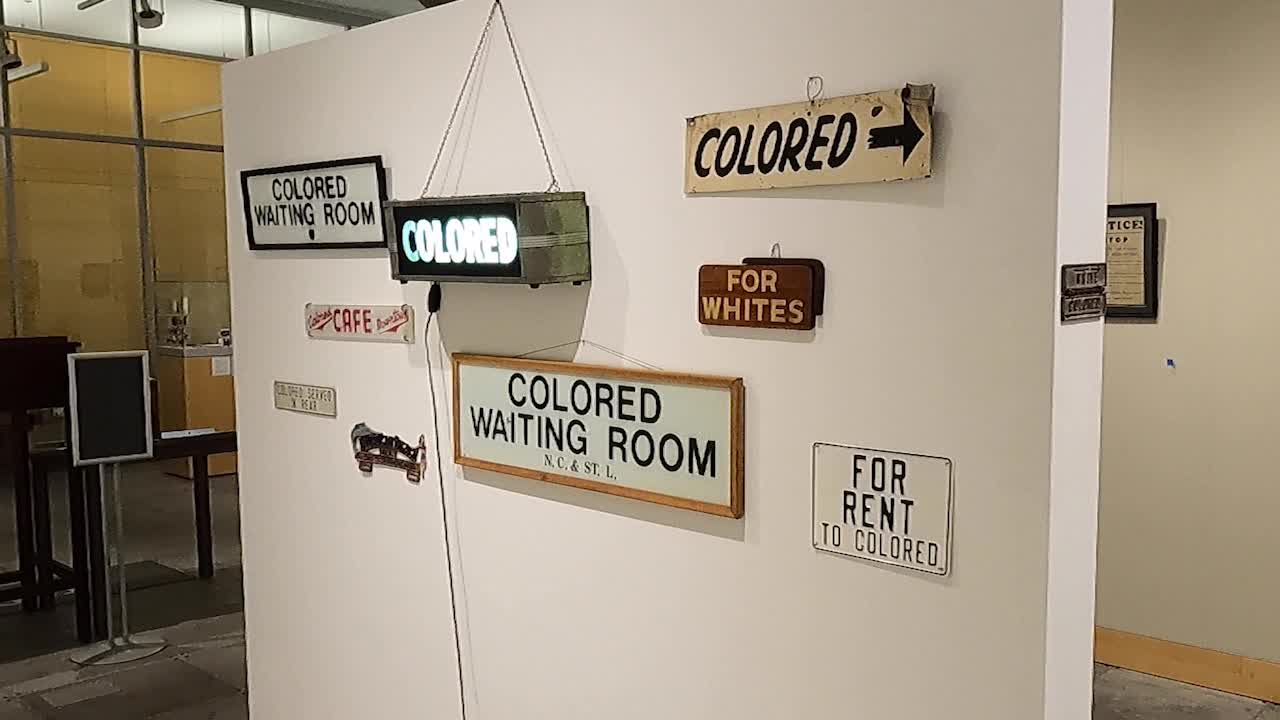Diane & Alan Page ‘TESTIFY’ exhibit on Black art, history opens in Minneapolis
A major gallery of African American art and artifacts, from the personal collection of former all-star Viking and Minnesota Supreme Court Justice Alan Page and his late wife Diane Sims Page, went on display Wednesday at the Minneapolis Central Library.
Page’s daughter Georgi Page-Smith, who is also the director of the Diane and Alan Page Collection, walked 5 EYEWITNESS NEWS through some of the most pivotal, eye-opening moments in Black history.
“We started it kind of at the beginning of our country,” Page-Smith said at the entrance of the “TESTIFY” exhibit on the second floor of the downtown library.
She pointed out a brick from the original construction of the White House.
“This is a brick that was made by enslaved people. Sometimes bricks were even made by children,” she said.

The next stop was the center of the exhibit where a white wall divided the room, a separation between art representing ‘expression’ and artifacts on the right side, including signs that formerly banned people of color from certain businesses. That side of the wall represents ‘oppression,’ Page-Smith said.
The Jim Crow Era was the next stop.
“We keep this present, so that we’re not doomed to repeat the past,” she said as she switched on the light on a sign reading, “Colored Only.”
“To us being a multi-racial family, this is just the height of absurdity, obscenity,” Page Smith added.
She was about 15-years-old when the collecting commenced.
“My stepmom, she had someone come into her house who said, ‘I see a lot of great modern art here, but where’s your African American History and your African American art for your kids?’ And my stepmom thought, ‘Yeah, she’s right,'” Page-Smith explained.
Before the artifacts were put on public display, she used to come home to them. Her parents hunted and gathered across the country over the years, commemorating, celebrating and working to ensure the most raw, almost unimaginable parts of Black history in America are never forgotten.
“This connected me to a heritage that I really had been more disconnected from, and I wasn’t quite ready for it to be honest,” Page-Smith recalled. “It was a conversation that made me uncomfortable. I think it still makes a lot of people uncomfortable.”
Decades and about 3,000 pieces later, Page-Smith is sharing the collection cross-country. In 2023, she sees these familiar pieces through a whole new lens, she said.
“We are seeing publicly, you know, in Minneapolis, Minnesota, globally, we’re seeing a lot of truth telling and it’s shocking to a lot of people that what’s been going on all along is now being recorded,” she shared, after making a reference to instances of police brutality, including the brutal beating of Tyre Nichols in Memphis, Tennessee in January.
“And it feels more urgent than ever that we all participate in this truth telling process and make some demands of our elected officials,” Page-Smith said.
The “TESTIFY” exhibit officially opened Wednesday, and is open to the public through March 29.